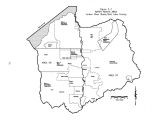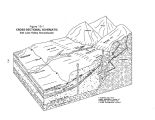| OCR Text |
Show Division of Water Quality recently completed intensive water quality monitoring on the Utah Lake and Jordan River sub- basins. The monitoring was done in conjunction with the division's watershed management initiative in the basin. The results of that monitoring are presented in the Utah Lake- Jordan River Basin Stream Assessment. The Division of Water Quality, in conjunction with the Jordan River Sub- basin Watershed Management Council, is in the process of conducting a watershed management approach initiative in the Jordan River Basin. The watershed approach features a high level of stakeholder involvement, water quality monitoring and information gathering, problem targeting and prioritization, and integrated solutions that make use of multiple agencies and groups. The result of the process will be the completion and implementation of a watershed management plan. At the present time, the basin has five wastewater treatment plants( WWTP). Four are public facilities, and the fifth is privately owned and operated by Kennecott Utah Copper as a self- contained facility. South Valley WWTP discharges directly to the Jordan River while Central Valley WWTP discharges to Mill Creek just above its confluence with Jordan River. The other two treatment plants, Salt Lake City WWTP and Magna WWTP, discharge almost directly into the Great Salt Lake ( See Table 12- 1). 12.3 Organizations and Regulations Passage of the Utah Water Pollution Control Act of 1953 ushered the state into maintaining high quality water resources. The Federal Water Pollution Control Act in 1972 brought about major changes, particularly in the wastewater treatment program. Table 12- 1 MUNICIPAL AND INDUSTRIAL WASTEWATER TREATMENT FACILITIES Treatment Facility Receiving Stream Discharge1' ( acre- feet/ year) South Valley Wastewater Treatment Plant Jordan River 25,000 Central Valley Wastewater Treatment Plant Mill Creek 68,000 Salt Lake City Wastewater Treatment Plant Farmington Bay ( via canal) 41,000 Magna Wastewater Treatment Plant Kersey Creek/ GSL 2,400 Kennecott Utah Copper Tailings Pond Total Containment 17,000 a) From discharge records for 11/ 1/ 94- 10/ 31/ 95 The Safe Drinking Water Act of 1976 requires individual watersystems to collect data on various bacteriological parameters, inorganic chemicals, and organic chemicals that may be a hazard to public health. In general, analyses are required on delivered water and not raw water sources. A number of federal, state and local agencies are currently involved in the management and monitoring of water quality. These agencies include the Salt Lake City- County Health Department, Salt Lake County Flood Control, Utah Department of Agriculture, Department of Environmental Quality ( Division of Water Quality, and Division of Drinking Water), Bureau of Reclamation, U. S. Geological Survey, and Environmental Protection Agency. 12.3.1 Local Towns, cities and counties have primary responsibilities for water pollution control within their respective entities. These responsibilities and authorities are contained in Sections 10, 11, 17, 19 and 73 of the Utah Code Annotated, 1953, Amended. Salt Lake County Division of Flood Control and Water Quality - This agency has been designated the water quality planning agency for Salt Lake County. Although the agency does not run its own water quality monitoring program, it uses the results of the monitoring programs conducted by other agencies to develop the water quality management plans for the county. In addition, this agency has sponsored or conducted a number of special studies examining various aspects of water quality. These include the Salt Lake County Clean Water Act, Section 208 Study 12- 2 |

















































































































































































